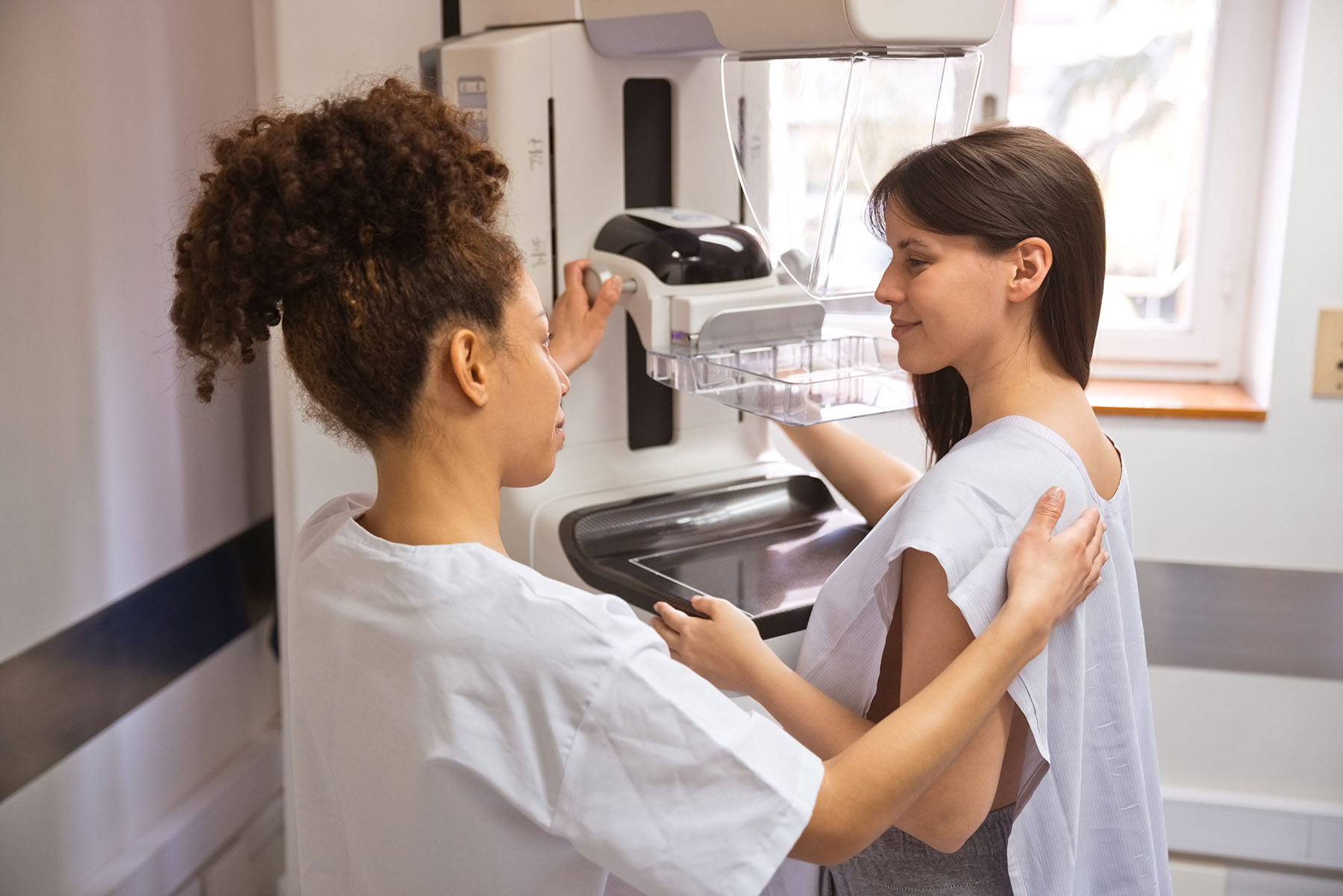Mammograms May Show Risk for Cardiovascular Disease

Once women with an average risk for breast cancer turn 40, mammograms are recommended as part of their routine health care screenings. Mammography, as a screening test, has contributed to a significant reduction in mortality from breast cancer.
Soon, mammograms may help save even more lives by bringing attention to a woman’s risk for cardiovascular disease, including heart attacks and stroke. Cardiovascular disease is the number one cause of death in women in the U.S. — 10 times the rate at which women die from breast cancer.
What can mammograms reveal about your heart?
Calcium buildup in the arteries of the breast, called breast artery calcification (BAC), can be seen on mammograms. Because BAC is not associated with breast cancer, its presence has been largely unreported to patients and their doctors.
But, a recent meta-analysis “includes relevant evidence-based information that BAC is associated with a significantly increased risk of developing cardiovascular diseases, such as stroke, peripheral vascular disease and heart failure,” says Yiannis Chatzizisis, M.D., Ph.D., Chief of the Division of Cardiovascular Medicine at the University of Miami Health System.
“Radiologists are starting to recognize the need to include the presence of BAC on mammography reports,” says Fernando Collado-Mesa, M.D., a breast imaging radiology expert at Sylvester Comprehensive Cancer Center, part of UHealth, who serves as director of Innovation and Artificial Intelligence at UHealth’s Department of Radiology.
“For example, in January 2023, the Canadian Society of Breast Imaging issued a statement calling for radiologists to include on the mammogram report the presence of severe BAC and to mention the strong association it has to cardiovascular disease,” says Dr. Collado-Mesa.
Radiologists and cardiologists at Sylvester and UHealth, and around the world, are working together to come up with ways to consistently catch and report the presence of BAC on mammograms to benefit patients and save lives.
What will this mean for women aged 40 and older?
Once it becomes standard practice to identify and report breast artery calcification seen on mammograms, women without any other signs of or risk factors for cardiovascular disease could be referred to a cardiologist for additional testing/screening and, if needed, start preventive measures to improve their cardiovascular health. This can include making healthy lifestyle changes and taking or changing medications to lower their risk for heart attack and stroke.
“It may also prove beneficial to women who already have a diagnosis of cardiovascular disease, as this added awareness can help them adhere to already prescribed medical therapy and lifestyle modifications,” Dr. Collado-Mesa says.
Dr. Chatzizisis points out that there are some potential limitations with using BAC to predict cardiovascular disease.
“Mammograms are not a definitive test for heart disease,” he says. “Mammograms may produce false positives, and there’s variability in BAC interpretation among radiologists. We need additional research to validate the findings in diverse populations and to establish collaborative care models involving radiologists, cardiologists, and primary care physicians to ensure continuous communication and coordinated care for women identified with BAC on mammograms.”
Your own efforts and lifestyle changes can have the most significant positive impact on your heart health.
You can lower your chance of having a life-threatening cardiovascular event by:
- exercising
- following a heart-healthy diet
- not smoking
- lowering your stress level
- getting enough quality sleep
- maintaining a normal weight
- managing your blood pressure and cholesterol levels
- taking any heart medications as prescribed
The leading cardiovascular research institutions recommend 150+ minutes per week of exercise, including:
- moderate-intensity aerobic activity
- muscle-strengthening (at least two days per week)
Following a heart-healthy diet, including:
- non-starchy, fiber-rich vegetables
- whole grains
- lean proteins
- low-fat dairy products
- low saturated fat
- low sodium
- avoiding added sugars, processed and fried foods
Advancing women’s heart health
“Available data show that BAC is more prevalent in Hispanic women followed by African American women,” says Dr. Collado-Mesa. “This is an area that requires further research to confirm these findings in large prospective research studies. Given the ethnically diverse population we serve in South Florida, this is a topic we are exploring to collaborate with our colleagues in UHealth cardiology services.”
Breast imaging radiology specialists and cardiologists are determining how best to implement and standardize the reporting of BAC in women who get their mammograms at Sylvester and UHealth facilities.
“We are at the forefront of implementing the added value of reporting breast artery calcification on mammography, as this is expected to further benefit women who already undergo screening mammography for early detection of breast cancer. We’re discussing how to best inform patients and their health care providers and whether to include an option for direct contact or referral to UHealth preventative cardiology services,” Dr. Collado-Mesa says. “We are also evaluating the use of artificial intelligence tools to assist breast imaging radiologists with these tasks.”
Dana Kantrowitz is a contributing writer for UHealth’s news service.
Tags: cardiology care in Miami, diagnostic radiology, Dr. Fernando Collado Mesa, Dr. Yiannis Chatzizisis
